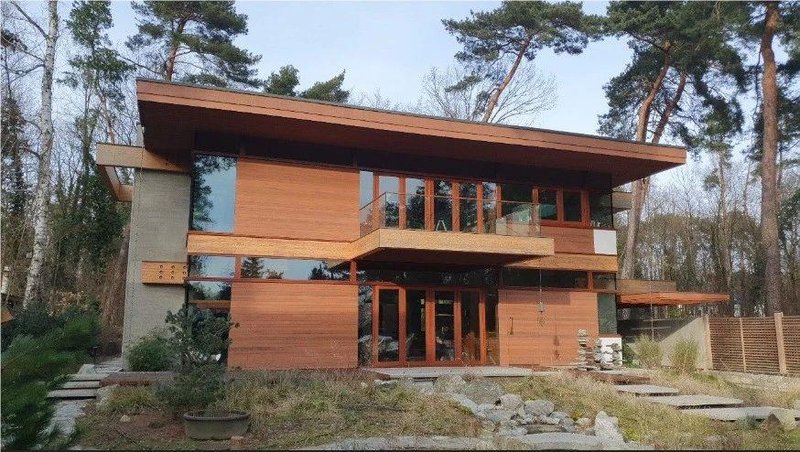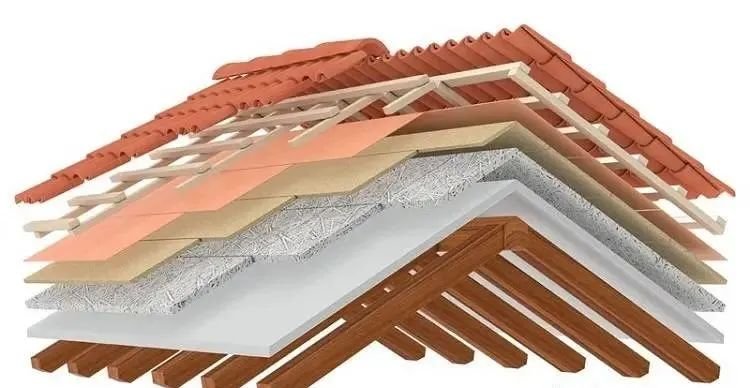The Triesch House in Berlin: How Aerogel Insulation Made a Slim, Modernist Home Possible in a Cold Climate
Amid the global challenge of reducing carbon emissions—40% of which stem from buildings—aerogel is disrupting the traditional belief that energy efficiency must come at the cost of bulk and aesthetics. This article uses the Triesch Residence in Berlin as a case study to illustrate how this nanoscale material slashes exterior wall thickness from 40 cm to 20 cm while achieving passive house-level energy performance. With an ultra-low thermal conductivity of 0.015 W/(m·K), aerogel solves insulation pain points in humid environments and eliminates thermal bridging—without compromising visual or spatial design. Through innovations such as precast concrete panels and mahogany composites, the project proves that energy conservation and elegant architecture can coexist. As major players like BASF and Aerogel-it scale the technology, aerogel is rapidly transitioning from premium solutions to mainstream housing, unlocking a new paradigm for sustainable living in the age of carbon neutrality.
The Triesch House: When a California Dream Met Berlin Winters – Thanks to Aerogel
In the heart of Berlin’s Charlottenburg district stands a house that looks like it was airlifted straight from the hills of Los Angeles. Clean lines, warm mahogany cladding, floor-to-ceiling glass, and impossibly slender concrete columns. Yet on a February morning when the temperature outside is –12 °C, the thermostat inside reads a steady 22 °C – with almost no heating required.
The secret behind this small miracle? Walls that are only 20 cm thick, insulated with aerogel – the lightest solid material on Earth.
For decades, extreme energy efficiency meant one thing: thick walls. In Germany, a proper passive house often demands 40–60 cm of insulation. In northern China, it can reach 80 cm. The result? Lost interior space, deep window reveals, and a visual bulk that clashes with modernist ideals of lightness and openness.
Architect Lars Triesch refused to accept that compromise. Inspired by the post-and-beam masterpieces of California’s Case Study Houses and Ray Kappe’s floating structures, he wanted a Berlin home that felt airy and transparent – without freezing its occupants.
Aerogel made it possible.
With a thermal conductivity of just 0.013–0.018 W/(m·K) – roughly three times better than conventional insulation – aerogel delivers the same performance in a fraction of the thickness. What used to require 1990s-era 40 cm of mineral wool or EPS now fits comfortably inside 20 cm.

How They Did It
The Mahogany “Sandwich” Wall A 15 cm laminated mahogany panel is wrapped around a 3–5 mm aerogel blanket on both sides. The total wall thickness: 20 cm. The measured U-value: 0.18 W/(m²·K) – easily beating Germany’s strict passive-house requirement of ≤ 0.15 while looking like fine furniture from the outside.
Skinny Concrete Columns That Still Insulate Structural columns were reduced from the usual 30–35 cm down to 18 cm by embedding a 5 mm aerogel core and reinforcing with carbon-fiber bars. The columns are stronger than traditional ones and eliminate thermal bridges completely.
Windows That Don’t Leak Heat Aluminum window frames received aerogel-filled thermal breaks, dropping their conductivity from ~1.8 W/(m·K) to 0.8. Paired with triple low-E glazing and warm-edge spacers, the entire window assembly hits a U-value of 0.78 W/(m²·K).
A Roof That Breathes Instead of thick PIR boards, the pitched roof was sprayed with 20 mm of aerogel coating under the metal standing-seam skin. No condensation, no heat loss, and 3 °C cooler attic temperatures in summer.
Three years of monitored data tell the story: annual heating demand is 28–32 kWh/(m²·year) – roughly half the average for new Berlin homes of similar size. Interior usable floor area increased by 4–6 % simply because the walls are thinner.

Beyond One House: Aerogel Goes Mainstream
What was once a €300–400/m² exotic material used on Mars rovers and oil pipelines is now dropping below €150–180/m² thanks to ambient-pressure production breakthroughs by BASF, Cabot, Aspen Aerogels, and a wave of Chinese manufacturers.
Prefabricated aerogel panels are now factory-made to ±1 mm tolerance, cutting on-site labor by 30–40 %. Cities from Paris to Shenzhen are testing aerogel retrofits on historic façades that can’t be thickened externally – preserving architectural heritage while slashing energy bills 35–50 %.

The Bigger Picture
Lars Triesch puts it simply while standing on his rooftop terrace overlooking Berlin’s snowy treetops:
“Aerogel didn’t just save energy. It gave me back the proportions I dreamed of. For the first time, extreme performance and architectural elegance aren’t enemies – they’re partners.”
In an era when buildings must become nearly zero-energy without turning into bulky bunkers, aerogel is proving that high performance doesn’t have to look heavy.
The future of sustainable architecture isn’t thicker walls. It’s smarter, thinner, lighter ones – and it’s already here.
LATEST NEWS
Comprehensive Overview of Polvere di Aerogel Product Lines for Industrial Buyers
2025-12-06
Exploring Aerogel Home Insulation as a Sustainable Choice for Modern Buildings
2025-12-06
Understanding Aerogel Home Insulation for Enhanced Fireproofing and Energy Saving
2025-12-05
Selecting the Right Polvere di Aerogel for Construction and Industrial Needs
2025-12-05
Reducing Energy Costs with Aerogel Home Insulation Technologies
2025-12-04
